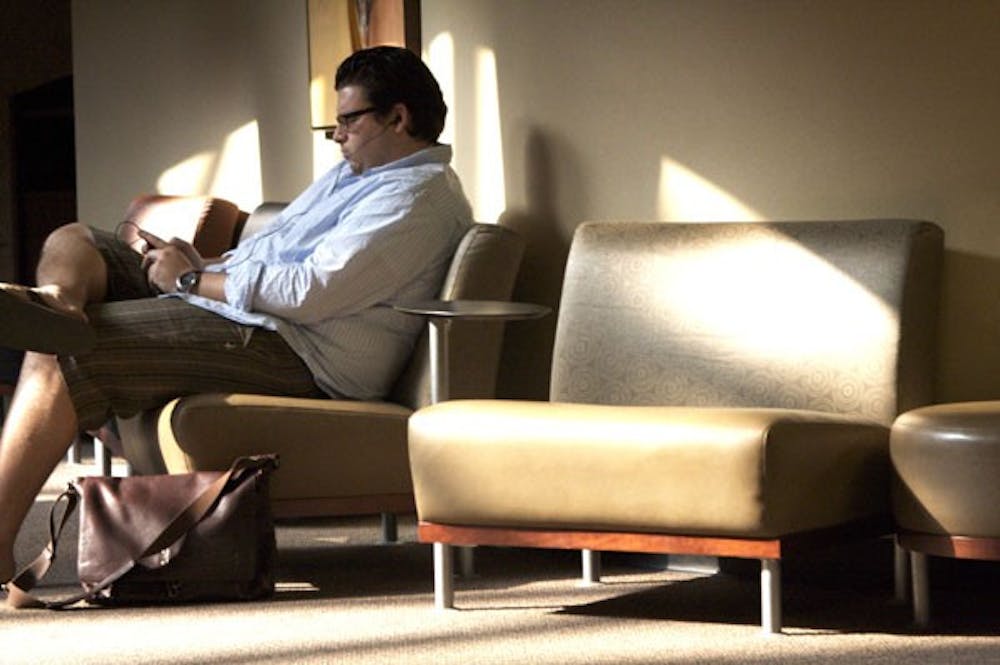The economic downturn has caused recent law school graduates to look for entry-level jobs in government and the public sector rather than at private firms.
William Ridenour, a managing partner for the Ridenour, Hienton & Lewis law firm in Phoenix, said this is the worst job market for young associates he has seen in 40 years.
Years ago, when lawyers first started out in the business most would go into private firms and the rest would work in government, banks or corporations, Ridenour said.
“Now it is just the other way around, with less than 50 percent going into private firms,” he said.
Working in a government position does have some advantages, said Ann Hartman, who recently passed the State Bar of Arizona in July 2009. Hartman secured a temporary position working at the Department of Economic Security as an administrative judge.
“In firms, you get rewarded quicker,” Hartman said. “Here, the wages don’t increase, but there is job security. It is not as cutthroat as private firms.”
Amy Owen, a second-year student at ASU’s Sandra Day O’Connor College of Law, said more and more students are looking outside private firms for jobs.
“It used to be the top 10 to 20 percent in the class going to firms, but now people are seeking out government jobs,” Owen said. “It is good for government positions, but it is also getting very competitive.”
In this market, an ongoing search is the best way to find a position, Hartman said.
“In Arizona it has been very hard to find a job, it is sort of a limbo in between guaranteed jobs,” she said. “We have all this education, but it is truly not going to pay off for a while.”
Hartman was hired at a government job in November for a nine-month seasonal period and only could work a maximum of 1,500 hours a year, but the pace has picked up recently.
“March is a heavy month,” Hartman said. “We have been asked to work longer hours. I expect to have this job at least through the end of the summer.”
Ridenour said client relationships have also transitioned through the years because of the economy.
“Forty years ago there were a number of firms that had wonderful clients that stood by them through thick and thin, almost as a contract between clients,” he said. “This is not necessarily true anymore.”
Clients now switch firms for better rates, and don’t abide by the same standards of loyalty that were once established, Ridenour said. Larger, out-of-state firms now dominate the once locally-represented community, he said.
Even the out-of-state firms have been affected by the economy in some aspects, Ridenour said, laying off associates, not hiring associates directly out of law school and reducing attorneys’ pay.
“Coming out of law school, it is going to be very hard to find a job unless you were at the top of your class,” Ridenour said.
A lot of firms are letting go of associates after two or four years, Owen said.
“Imagine these students with no experience coming in, when firms are letting go of seasoned attorneys,” she said.
Starting salaries for attorneys have declined with firms. The average for a starting attorney used to be between $65,000 and $70,000 annually, with larger companies starting associates at $100,000, Ridenour said. Now, attorneys will begin at $40,000 in smaller companies and $75,000 in larger firms.
The culture of who is being hired has also changed over the years, Ridenour said.
“Young people coming into firms directly out of law schools don’t want to make the law firm their whole life,” he said. “They don’t want to work 80 hours a week and be down here on weekends.”
The July 2009 Arizona Bar exam yielded a 78.4 percent pass rate for students, said Pat Giallanza, spokeswoman for the Arizona Bar Association. ASU had an 85.3 percent pass rate, with 110 of 129 students passing, according to a statement by the Arizona Supreme Court.
Ridenour, a UA alumnus, said UA offers opportunities for recent law graduates, but the process has been affected by the economy.
“The last few years, there would be 35 law firms coming to the school to interview the students, half in-state firms and half out-of-state,” he said. “With the downturn of the economy, the number of firms fell to 15 and mostly in-state. It is really a chilling effect.”
Owen said most students are relying on personal connections to secure interviews and internships. The number of companies interviewing at ASU has declined, making it extremely competitive when interviews are offered.
“In a way, law school is just like medical school,” Hartman said. “It really does set students up for success. It is cutthroat, but after a lot of work, it will eventually pay off.”
Reach the reporter at amoswalt@asu.edu





